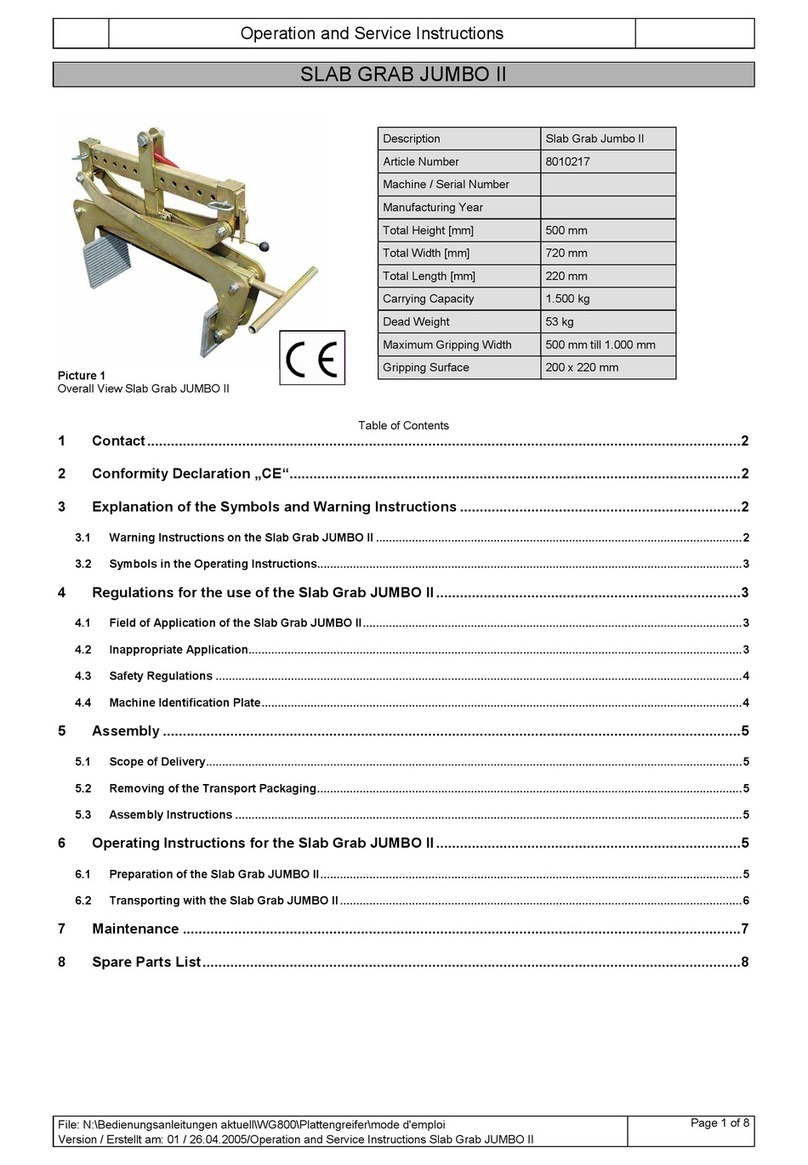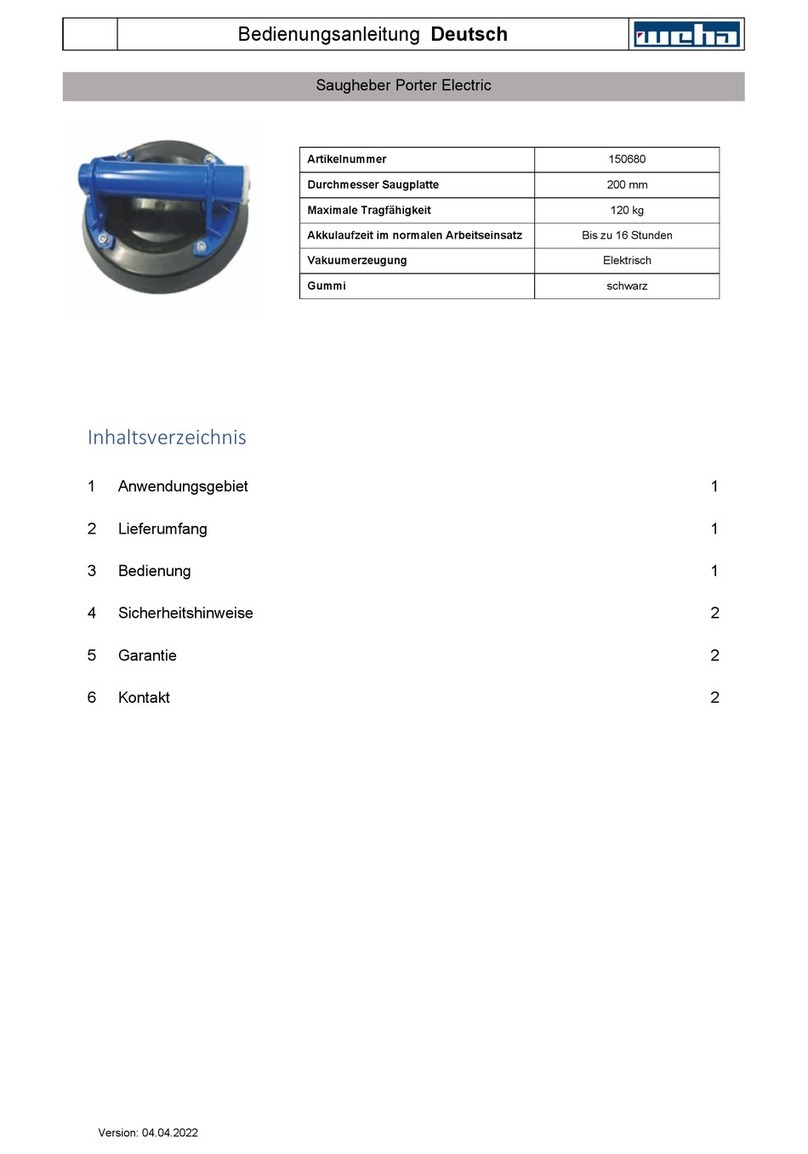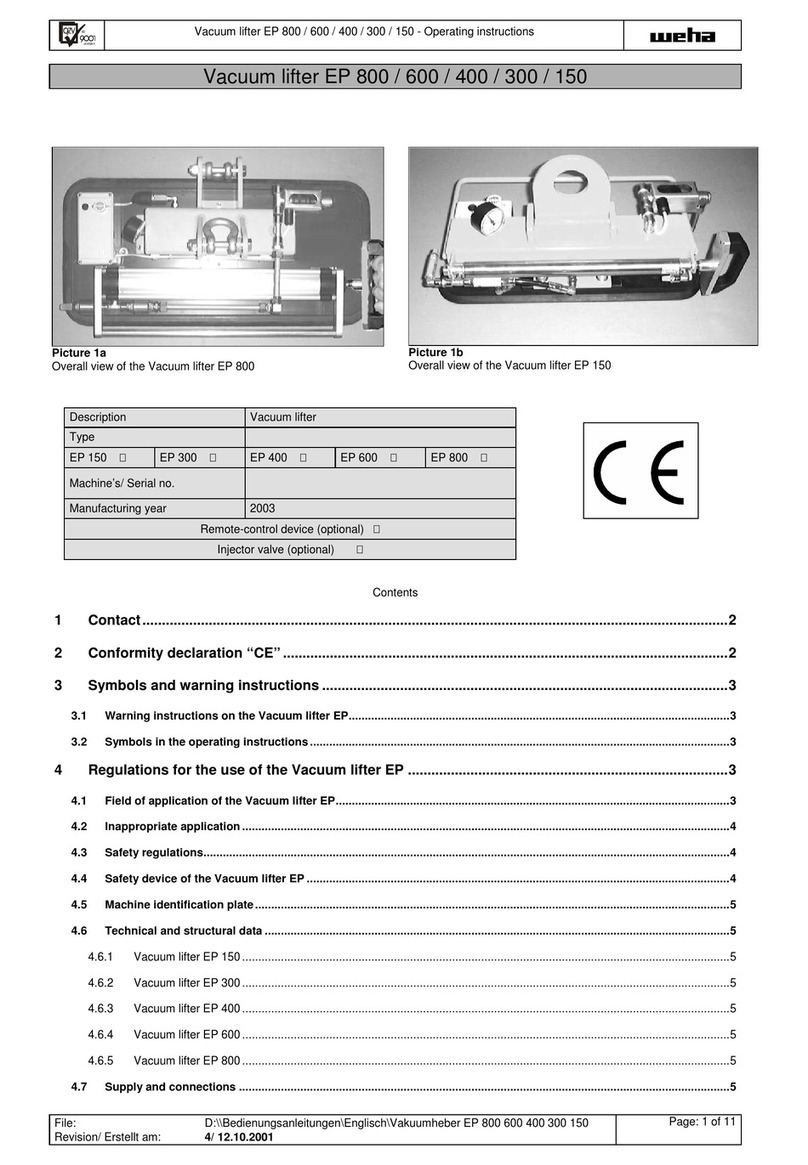•Make sure that no vacuum loss occurs. If a vacuum loss, the stone slab cannot be transported. The
sealing lip and the bearing surface shall be checked and it must again be generated vacuum. During
another failed attempt of vacuum lifters T is to undergo an examination, whether this is in perfect
working condition.
•With the shekel of the vacuum lifter T is now connected to the lifting device.
•Make sure that the lifting equipment used and the lifter has the required bearing capacity to carry
the full load lifting and transport. Make sure using the technical data that the permissible load their
lifter is not exceeded. The load is halved when vertical transport of stone slabs!
•Lift off the vacuum lifter T with the lifting device until the stone slab hangs freely.
•Make sure now that the stone slab hangs horizontally as possible. By tilting the stone slab of the
vacuum lifter T must be set accordingly, as the stone slab otherwise detached from the vacuum lifter
T!
•Now the stone slab can be lifted to transport height.
• Transport may no vibrations occur and also may not commute the stone slab.
Caution Danger!
Never stand under suspended loads!
During transport, observe the manometer and settle immediately the stone slab upon the
occurrence of a vacuum loss!
The danger zone following must not be entered!
•Make sure that the surface on which you now take the stone slab has sufficient capacity!
•Is now the stone slab placed and secured, the ball valve must be closed.
•Now open the vent valve . The vacuum chamber and the vacuum tank safety are now ventilated.
•The vacuum lifter T can now be lifted from the stone slab.
Below are listed the activities that must be carried out the operator of the vacuum lifter T, by a
person with the appropriate technical knowledge!
For damage caused by failure to follow these instructions, the manufacturer accepts no liability!
•The sealing lip of your vacuum lifter must be cleaned monthly and checked for damage.
• The water must be regularly attached (as necessary, depending on the humidity of the incoming
ambient air) by actuating the drain valve to be emptied in order to prevent rusting of the safety tank
inside.
•The vacuum lifter T is a load receiving means! The entrepreneur who uses the vacuum lifter T has
to ensure that the vacuum lifter T is checked at intervals not exceeding one year by an expert! (§ 23,
para. 2, BGV D6)
• The next test date of the vacuum lifter is T "next inspection date" shown on the yellow badge. (z. B.
in April 2004)
•repairs and welds (poisoning!) Must be performed only by persons who have the necessary
knowledge and skills for this!
• You can check your vacuum lifter T by an expert at the company WEHA-Ludwig Werwein GmbH in
Königsbrunn, ask us!



























